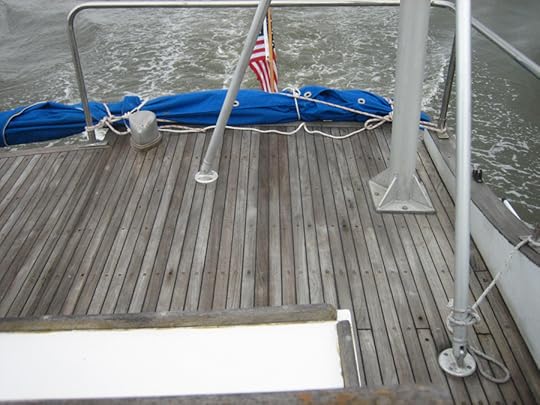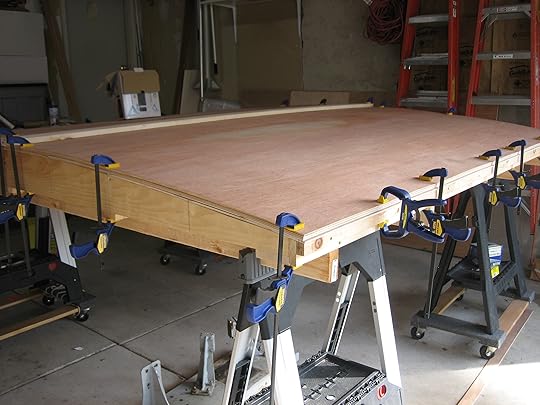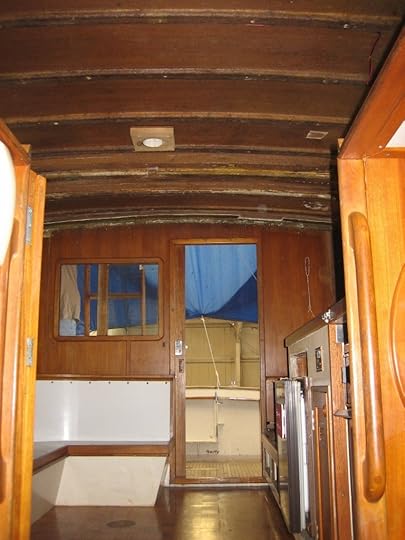Itching to get started…

The general idea of a boat is simple. It's designed, in theory, to keep water on the outside. In theory, at least. But the reality is that boats leak. I often describe Annabel Lee as a collection of leaks in the shape of a boat. But we're preparing to eliminate the largest source of leaks: the bridge deck. Here's some background:
Aboard our trawler, the bridge deck consisted of what once had been ½" teak decking fastened down over fiberglass. The previous owner, I'm told, was very fond of two things: bright, honey-colored teak decks… and his belt sander. The sad result is that he sanded the decks clear down to their fasteners, which led to years of water gradually seeping through to the coring. Fortunately the coring in question was yet more solid ½" teak lumber so there is no rot involved, but unfortunately years of that saturated teak freezing and thawing had compressed the wood fibers and led to it delaminating from the fiberglass both above and below, undermining the deck's strength.
The damaged area spans roughly 8' by 8', and while we could repair individual sections, we decided it would be best to remove all damaged core and delaminated glass, rebuild the salon coach roof and stringers, and reglass it above and below. We constructed a frame to duplicate the precise camber of the area, and have clamped down three layers of marine-grade ¼" ply with alternating seams to preshape the wood. Our intention is to laminate these layers with epoxy, as well as laminate stringers to the duplicate dimensions of the originals. The cabin will be braced from all sides, the damaged area of the deck removed and the new laminate positioned and epoxied in place. From there it would be glassed above and below to match the original thickness, using 17 and 18 oz. Biaxial glass/mat and 1.5 mat and Vinylester resin, faired to join the un-damaged remainder of the deck.

This deck job has been delayed by work and health, but at this point it will be going forward. Before we began I figured I'd tap the collective wisdom of this group and see what input any of you have to offer. No, we've never done work like this before, and yes, we're approaching it with a large amount of trepidation. But we've been through something similar when we repaired some pre-existing damage to the keel; we approached that project with caution and as much research as we could gather, and discovered in the end it was simply a matter of having the cojones to attach the hull with power tools, and then many small steps to put it back together, stronger and better than when we began. And through the keel project I lost all fear of working with fiberglass. It's sticky, messy, itchy work, but in a strange way it's kind of fun. But I figured I'd share with you all my next level of insanity. Any advice, suggestions or just plain sympathy would be greatly appreciated!
Share on Facebook




